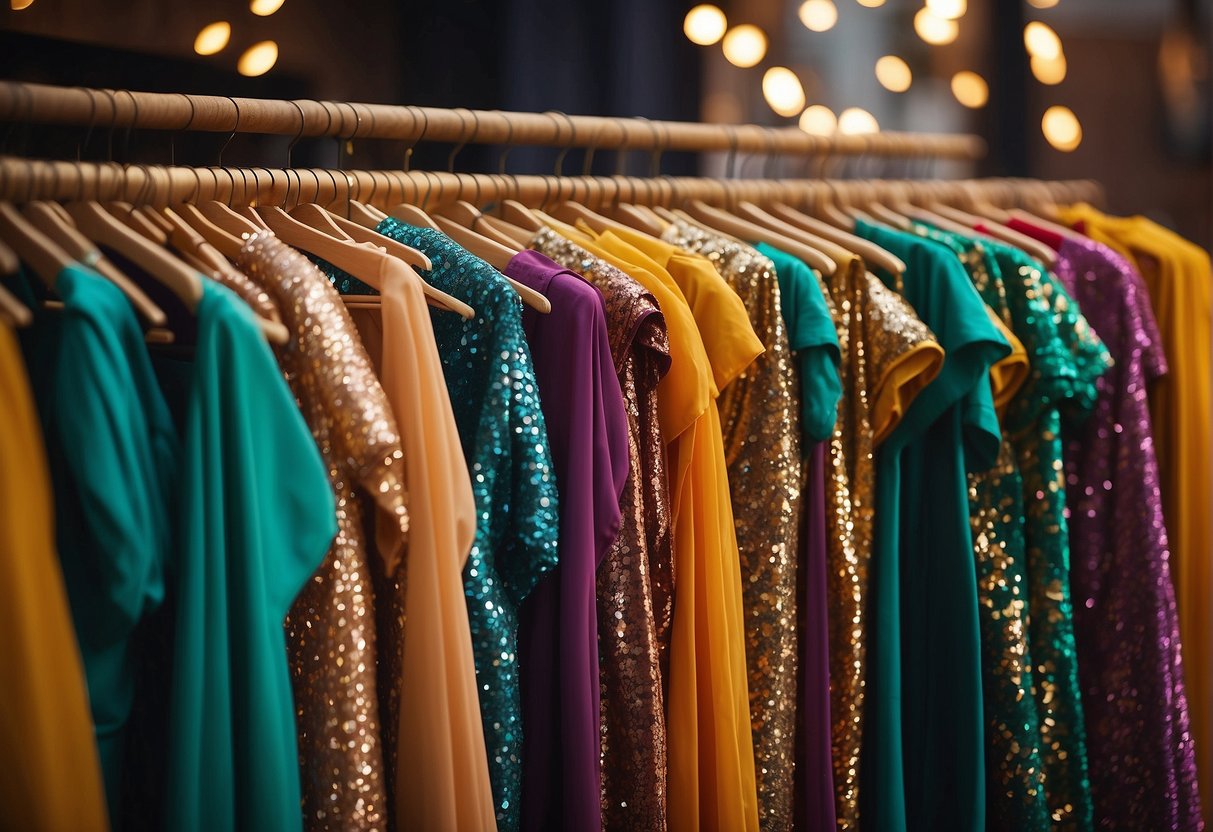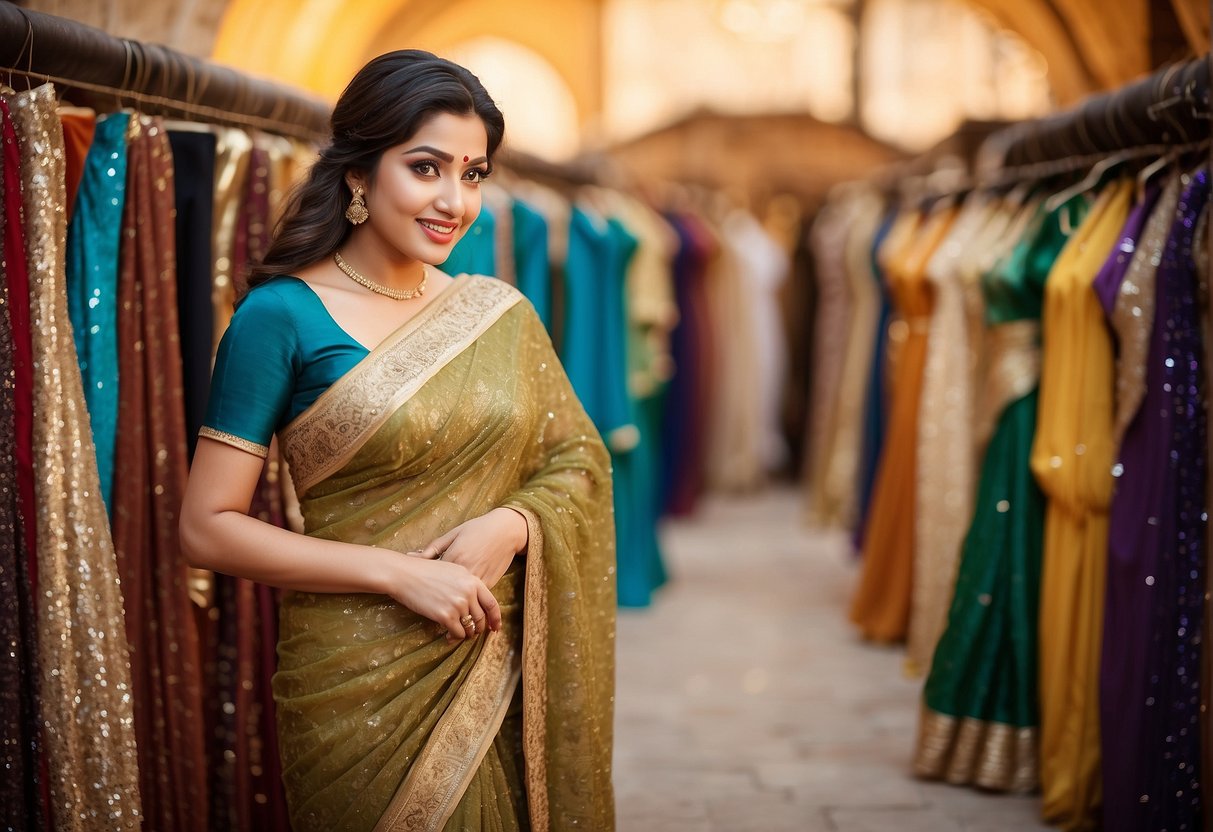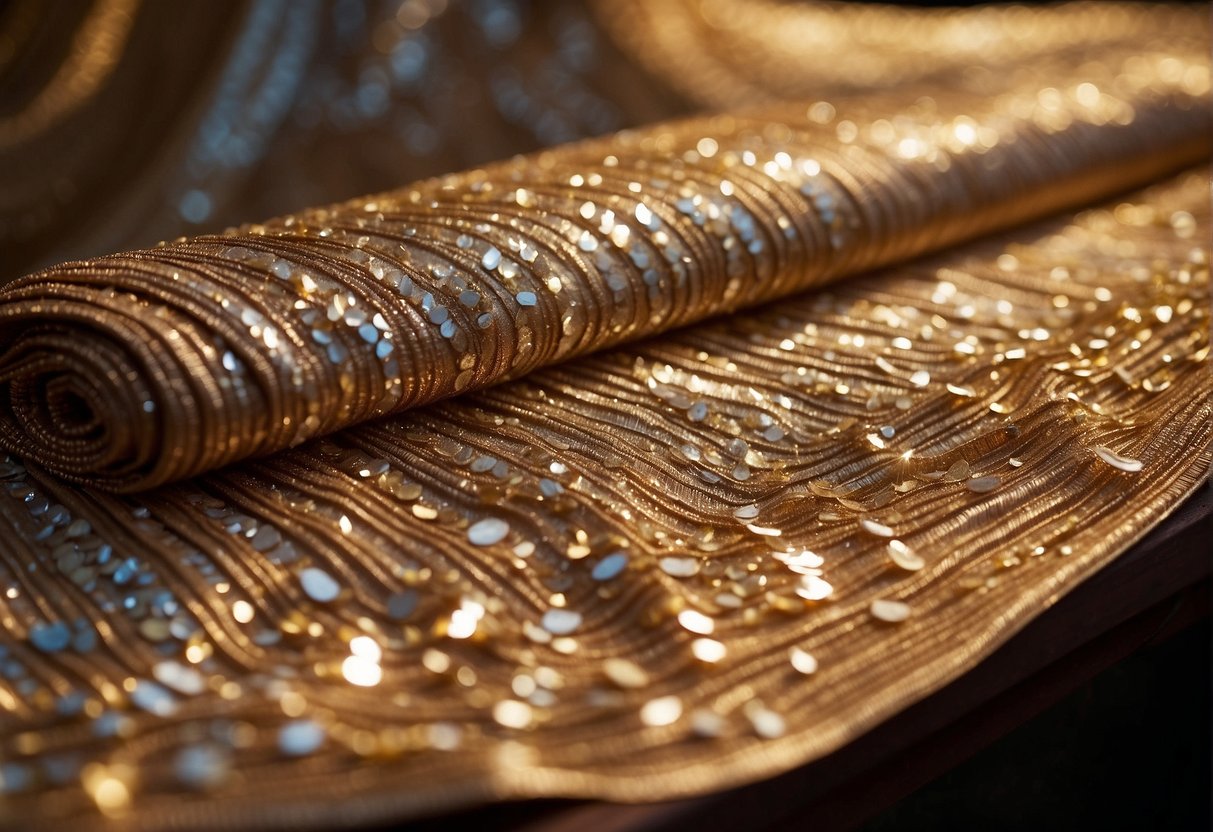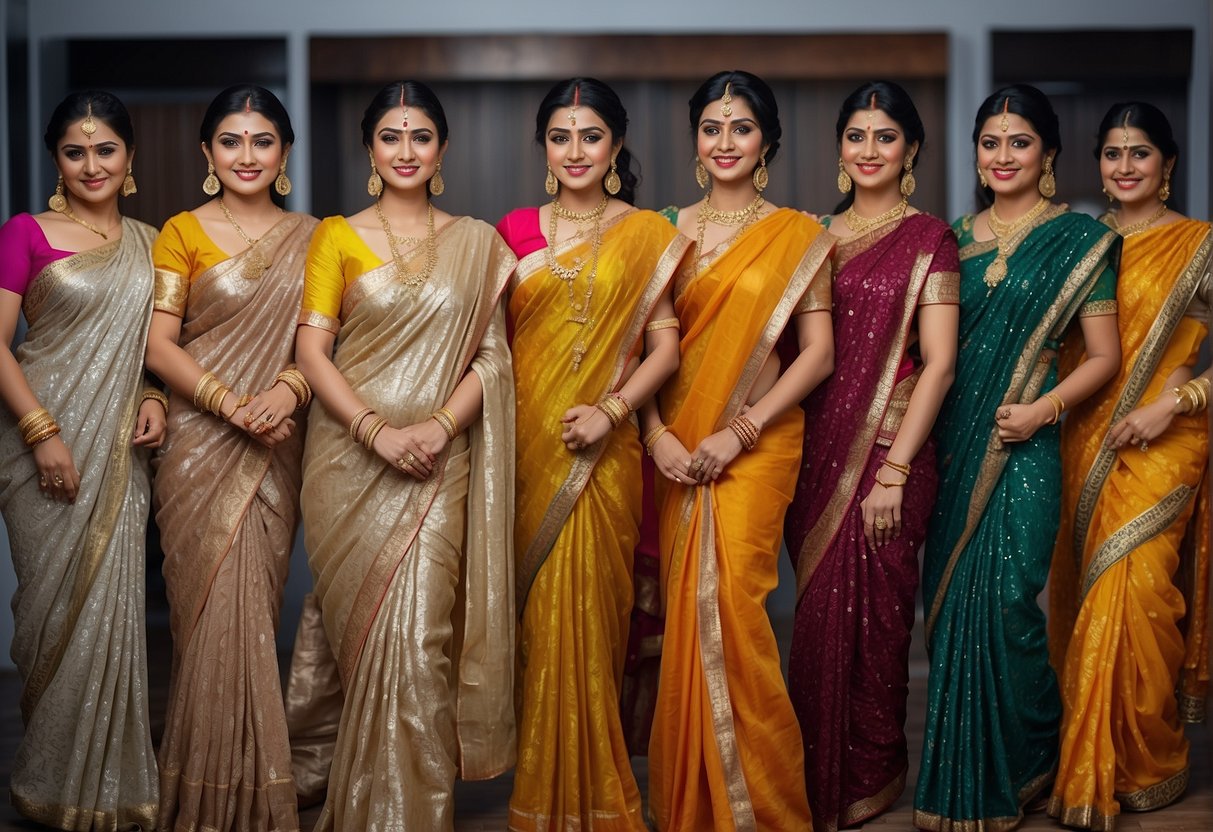Sequin sarees have been an integral part of Indian fashion for centuries. These sarees, which are adorned with sequins, have a rich history that dates back to ancient times. The origins of sequin sarees can be traced back to the Mughal era, where they were first embellished with gold and silver thread, embroidery, and precious stones.

Over time, sequin sarees have evolved to become more elaborate and opulent. Today, they are available in a wide range of colors, designs, and styles, making them suitable for various occasions, including weddings, parties, and other special events. Anuki.in has a wide range of sequin sarees available that are suitable for various occasions, wedding wear and party-wear.
Sequin sarees have become an iconic symbol of Indian culture and tradition. They embody the essence of femininity and timeless allure, representing the very fabric of Indian identity. In this article, we will explore the origins and evolution of sequin sarees through time, tracing their journey from simple pieces of clothing to stunning masterpieces of craftsmanship and design. We will delve into the cultural significance of sequin sarees and their role in Indian fashion, highlighting the unique qualities that make them so special.
Historical Significance and Cultural Evolution

Sequin sarees have a rich history that dates back to the ancient Indus Valley civilization. Over time, they have evolved to become an integral part of Indian fashion, worn by women of all ages and backgrounds. In this section, we will explore the origins and evolution of sequin sarees through time.
Indus Valley Origins and Ancient Traditions
The Indus Valley civilization is known for its rich cultural heritage, including the dhoti and nivi drape, which are believed to be the earliest forms of draped clothing. The Sanskrit word for saree, "sati," was first used during this time period. Indian women have been wearing sarees for centuries, and the tradition has been passed down from generation to generation.
Influences from Mughal to British Era
During the Mughal era, which lasted from the 16th to the 19th century, the saree became more elaborate and opulent. It was during this time that the saree was first embellished with embroidery, gold and silver thread, and sequins. The Mughal influence can still be seen in modern sequin sarees, which often feature intricate designs and patterns.
In the 19th century, the Britishers introduced western clothing to India, which led to a decline in the popularity of sarees. However, with the rise of the Indian independence movement, the saree once again became a symbol of national pride and cultural identity.
Post-Independence and Modern Adaptations
After independence, sequin sarees became a popular fashion statement in Bollywood and among the Indian elite. Today, sequin sarees are worn by women of all ages and backgrounds, and they are available in a wide range of styles, colors, and patterns.
Anuki.in has a wide range of sequin sarees available that are suitable for various occasions, wedding wear, and party-wear.
Design, Material, and Craftsmanship

The design, material, and craftsmanship of sequin sarees have evolved over time to cater to the changing preferences of fashion enthusiasts. Sequin sarees are known for their timeless appeal, beauty, grace, and colors that make them a popular choice for various occasions.
Weaving Techniques and Fabric Types
Sequin sarees are made using different weaving techniques and fabric types. The most popular fabrics used for making sequin sarees include silk, cotton, chiffon, and georgette. Handloom sarees such as Tant, Banarasi silk, Kanchipuram, Mysore, and Uppada are also used to make sequin sarees.
Artistry in Embroidery and Embellishments
Embroidery and embellishments are an essential part of sequin sarees. Sequins are embroidered on different varieties of fabric bases such as cotton, silk, georgette, and other synthetic fabrics. Clothes embellished with sequins vary in prices. For synthetic-based designs, the pricing varies from Rs. 500/- to Rs. 1000/-.
Evolution of Draping Styles and Accessories
The draping style of sequin sarees has also evolved over time. The traditional way of draping a saree is still popular, but modern saree styling has also gained popularity. Women now experiment with different draping styles and accessories such as lehenga, bralette, and more.
Overall, sequin sarees are a perfect blend of craftsmanship, design, and material. Anuki.in has a wide range of sequin sarees available that are suitable for various occasions, wedding wear, and party-wear.
Frequently Asked Questions

How did sequin embellishments come to be incorporated in saree designs?
Sequin embellishments have been used in saree designs for centuries. The origin of sequin work can be traced back to ancient India, where it was used to decorate royal garments and accessories. The use of sequins in sarees became popular during the Mughal era (16th to 19th century), when sarees were adorned with intricate embroidery, gold and silver thread, and sequins.
What cultural significance do sequins hold in traditional Indian attire?
Sequins hold a special place in traditional Indian attire, symbolizing wealth, prosperity, and luxury. In Indian culture, the use of sequins is associated with celebrations and special occasions, such as weddings, festivals, and religious ceremonies.
Can you trace the evolution of sequin work from ancient to modern fashion?
The use of sequins in Indian fashion has evolved over time, from simple designs in ancient times to more complex and intricate patterns in modern fashion. Sequin work has been influenced by various cultural and historical factors, including the Mughal era, British colonialism, and globalization.
What techniques are used in the creation of sequin sarees?
Creating sequin sarees requires skill and precision. The sequins are typically hand-sewn onto the fabric using a needle and thread. Different techniques are used to create different effects, such as using different sizes and colors of sequins, or arranging them in different patterns.
How has the use of sequins in sarees changed over different historical periods?
The use of sequins in sarees has changed over different historical periods, reflecting the influence of different cultural and artistic trends. In ancient times, sequins were used sparingly and in simple designs. During the Mughal era, sequins were used in more elaborate designs, often combined with embroidery and other embellishments. In modern fashion, sequins are used in a variety of creative ways, including in bold and colorful patterns.
What are the major influences on the design and popularity of sequin sarees?
The design and popularity of sequin sarees are influenced by a variety of factors, including cultural traditions, historical trends, and contemporary fashion. The popularity of sequin sarees has grown in recent years, as they are seen as a glamorous and stylish choice for special occasions. Anuki.in has a wide range of sequin sarees available that are suitable for various occasions, wedding wear, and party-wear.
